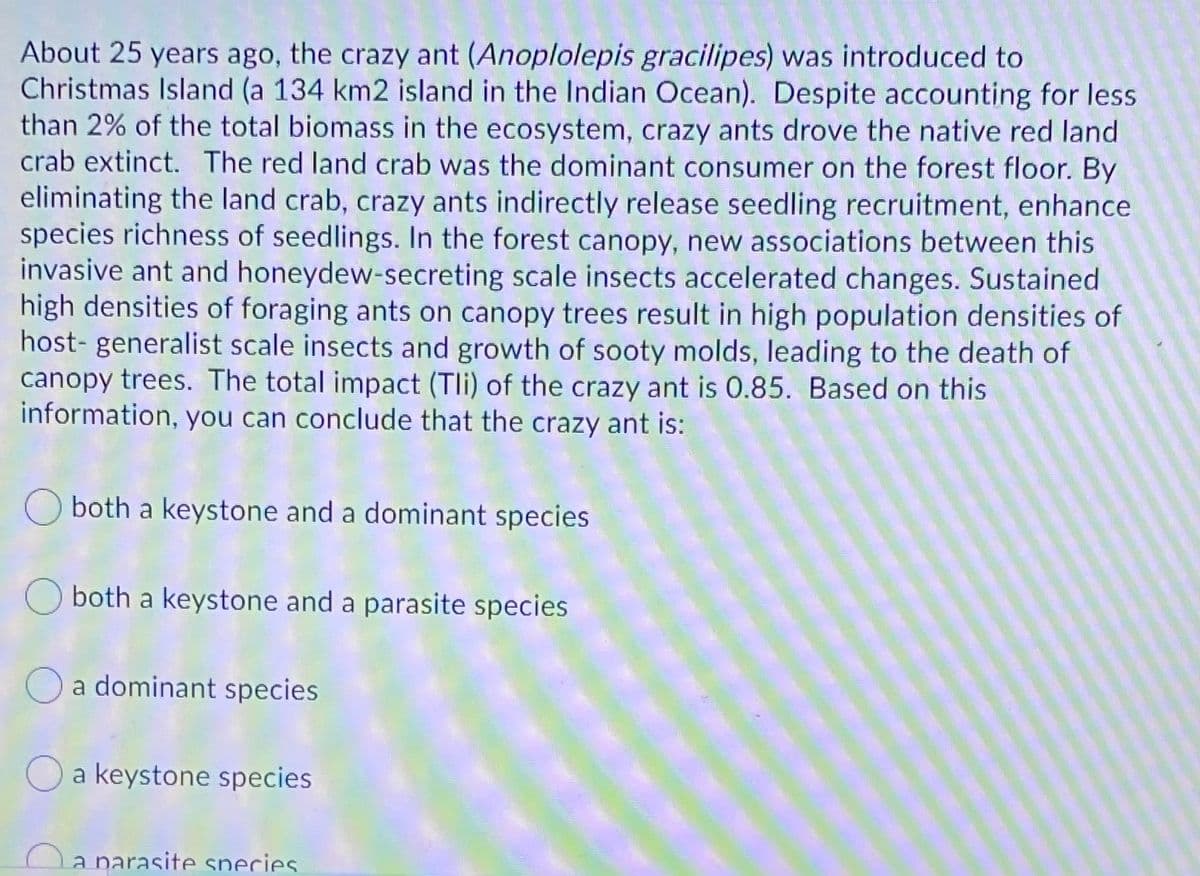About 25 years ago, the crazy ant (Anoplolepis gracilipes) was introduced to Christmas Island (a 134 km2 island in the Indian Ocean). Despite accounting for less than 2% of the total biomass in the ecosystem, crazy ants drove the native red land crab extinct. The red land crab was the dominant consumer on the forest floor. By eliminating the land crab, crazy ants indirectly release seedling recruitment, enhance species richness of seedlings. In the forest canopy, new associations between this invasive ant and honeydew-secreting scale insects accelerated changes. Sustained high densities of foraging ants on canopy trees result in high population densities of host- generalist scale insects and growth of sooty molds, leading to the death of canopy trees. The total impact (Tli) of the crazy ant is 0.85. Based on this information, you can conclude that the crazy ant is: O both a keystone and a dominant species O both a keystone and a parasite species O a dominant species O a keystone species a narasite species
Plant Structure and Growth
Roots anchor, the plant, ingest minerals and water, direct water and supplements, and store food. These are two kinds of root frameworks.
Plant Life Cycle
Plants are part of the PLANT KINGDOM, which is one of the five kingdoms of life. Plants are divided into smaller classes based on common characteristics. Certain characteristics are shared by all plants. They are made up of a large number of cells. They also make their own food through a chemical process called photosynthesis, which involves the use of water, carbon dioxide, and solar energy. They pump life-giving oxygen into the air as a by-product.
Life Cycle of Plants
All the organisms that belong to the Kingdom Plantae are known as plants. They are multicellular and eukaryotic and can synthesize their food by photosynthesis, known as autotrophic organisms. They are classified based on certain characteristics, such as the plants bear flowers; some have only naked seeds and do not contain flowers. Some plants neither have seeds nor flowers, such as ferns and mosses.
Plant Morphology and Anatomy
The study of life and organisms is biology. The cell is recognized as the basic unit of life by biology. From ancient Greek, biology is recognized. Modern biology deals with the recent developments in Science.

Step by step
Solved in 2 steps


